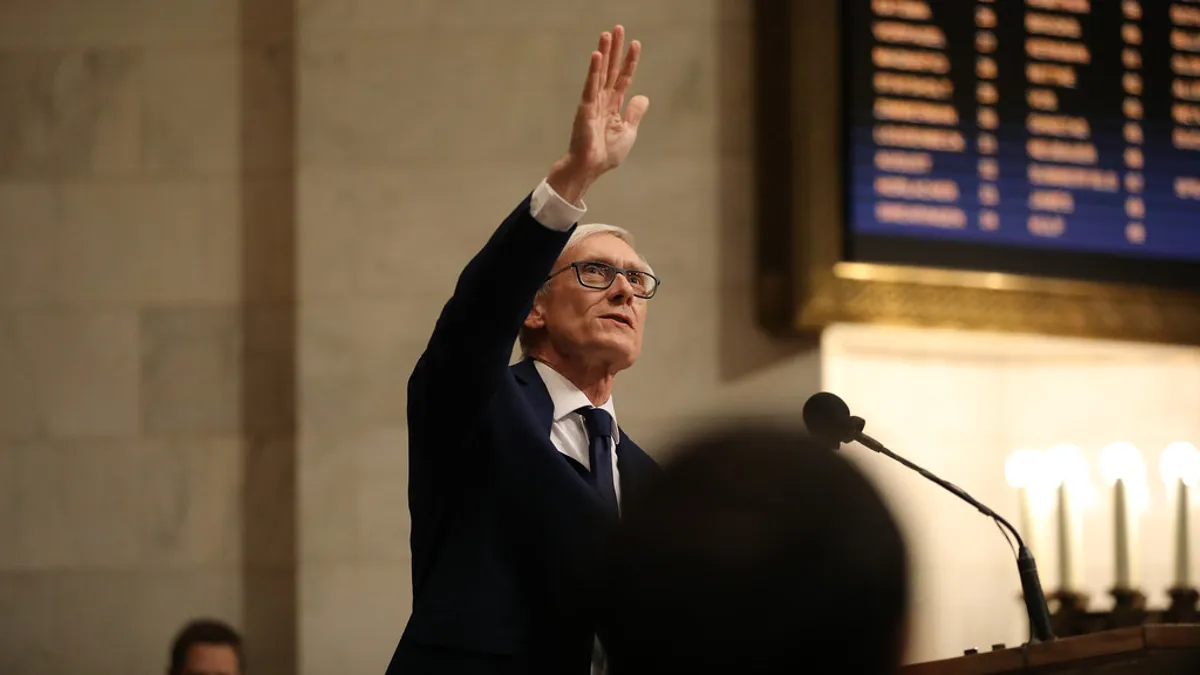Dive Brief:
-
Wisconsin Gov. Tony Evers, D, on Friday signed an executive order setting the state on a path to reach 100% carbon free electricity by 2050.
-
The order establishes an Office of Sustainability and Clean Energy, tasked with bringing the state to that goal. Evers pushed the order through administratively after the effort failed to make it through the budget process, Tyler Huebner, executive director of Renew Wisconsin, told Utility Dive.
- Both chambers of Wisconsin's legislature are Republican majority and passed a bill during the state's 2018 lame duck session to limit the power of the Democratic governor. Wisconsin "probably has the steepest hill to climb to sort of implementing [the governor's] policy vision on clean energy," J.R. Tolbert, managing director at Advanced Energy Economy, told Utility Dive in February.
Dive Insight:
Wisconsin's path to 100% carbon free remains opaque, but Friday's order signals the intent of this administration.
Evers has already found other bipartisan avenues to push clean energy through: His July-approved budget directed $10 million in Volkswagen settlement funds toward electric vehicle charging stations. Evers was also able to appoint Rebecca Cameron Valcq to the state's three person Public Service Commission.
Renewables advocates have been pushing the commission to clarify third party finance rules, which they say hinder the ability of some solar developers to bring more solar to the state.
A petition to investigate the proceeding was shot down in January, but Valcq voted in favor of opening up the proceeding, which was a "signal" that she would be open to diving into those issues more, Huebner told Utility Dive in February. The commissioner was also supportive of the governor's order.
"Setting a goal of zero-carbon generation in Wisconsin paves the way towards a future with plentiful, inexpensive clean energy," she said in a statement.
Energy costs in Wisconsin are high because the state imports fossil fuel resources, and the low costs of wind and solar is one area where renewable energy groups say they could see progress. There's been "a continued stream of utilities announcing either wind or solar projects," said Huebner.
"The cost of utility-scale solar has declined 88% in the past decade, and utility-scale wind costs have declined 69% as well," Huebner said in a statement. "Utilities across America and in Wisconsin are finding that it is less expensive to build new solar and wind energy facilities than it is to keep operating some existing coal power plants."
Another effort on that front is a proposed $492–543 million transmission project, which would transport wind energy from Iowa to Wisconsin.















